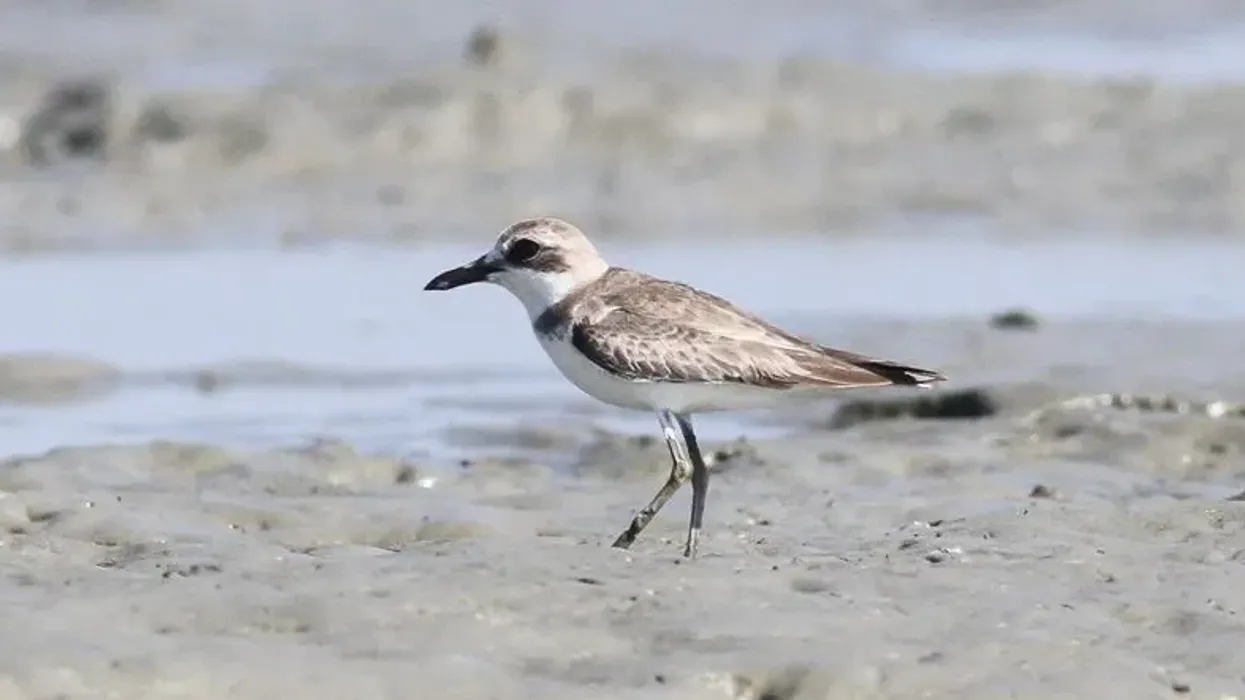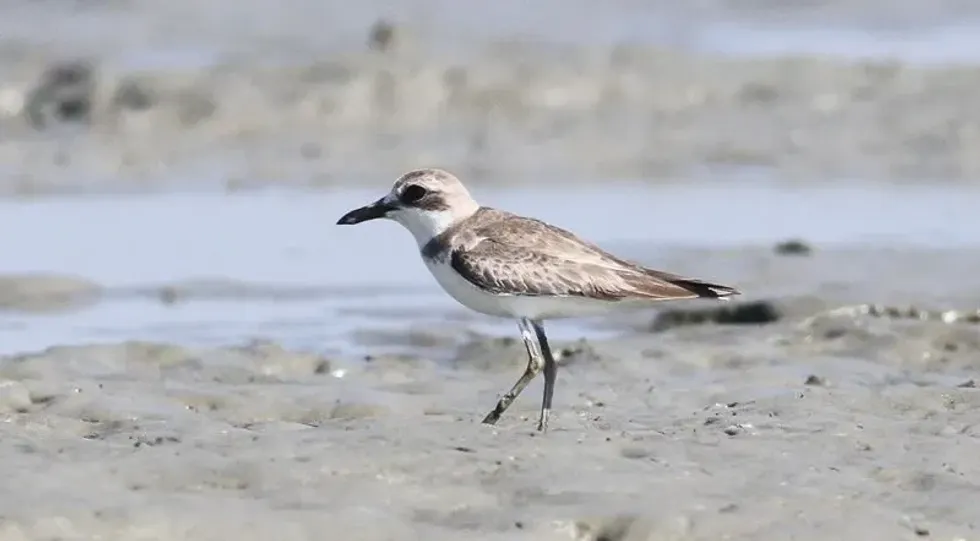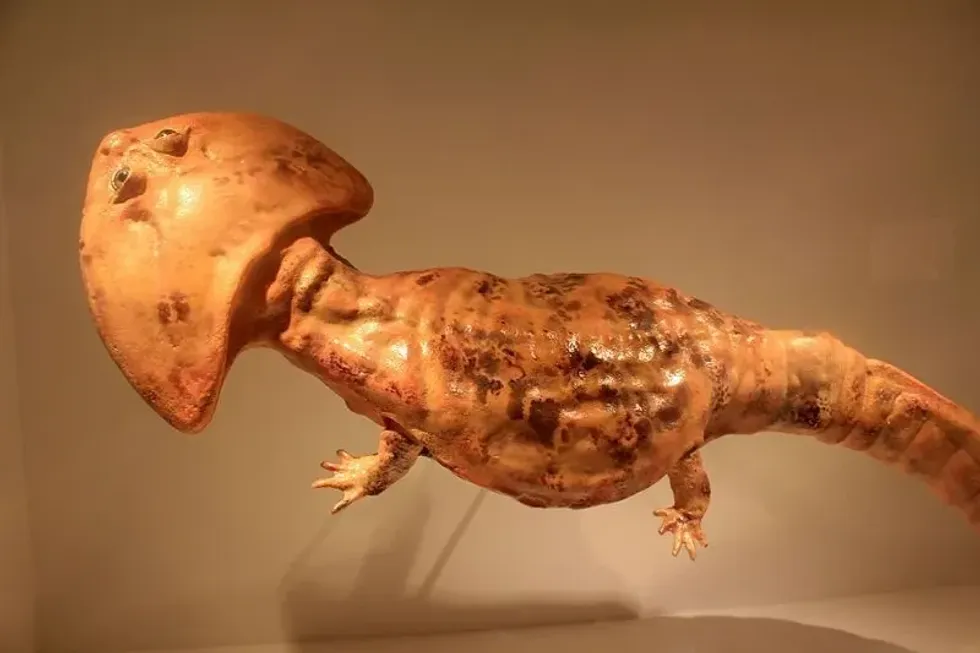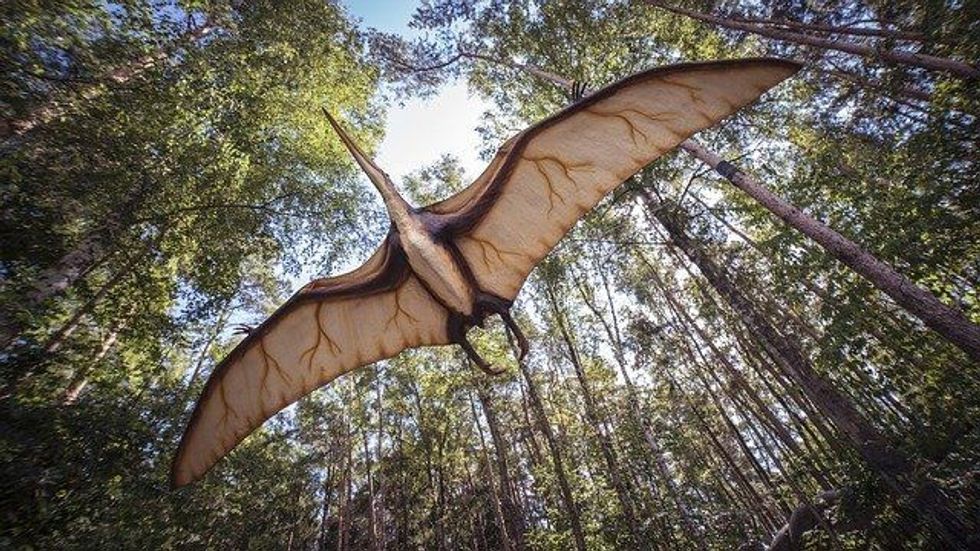The Charadriidae is a family of birds and this family comprises 66 extant species and 10 genera which are distributed across the world, both in the North and South Hemispheres. Most of these species are known as plovers, such as the American golden plover, lapwings, and dotterels and are mostly species of shorebird.
Charadriidae family avians that are larger are called lapwings, and the smaller species are called plovers.
The 10 genera of this family are Erythrogonys, Charadrius, Vanellus, Thinornis, Pluvialis, Peltohyas, Elseyornis, Phegornis, Anarhynchus, and Oreopholus, which are further distributed into 66 different species. Vanellus and Charadrius are the two largest species in the family.
Plover and lapwing birds are small-medium in size, chunky species that live in wet, coastal regions with a rounded head, a steep forehead, large eyes, and short neck. They are typically brown, black, gray, and white in color with a bold pattern. Their legs are short-medium, and the bill is shorter than their head.
If you liked these true facts about this family, then you'll surely like these facts about willet and marsh wren too!
Charadriidae Interesting Facts
What type of animal is a Charadriidae?
The family Charadriidae includes both resident and migrant species. Most are semi-social on winter and migration grounds, where they form small-large shared roosting and foraging flocks.
Most plover and lapwing species are elegant and strong fliers, and most are often seen rapidly running on the ground. These birds are active both during the night and day. The majority of the species in the family Charadriidae are vocal and due to their vocalizations, they have received local names.
What class of animal does a Charadriidae belong to?
The Charadriidae belongs to the Aves class of animals. The Aves class consists solely of birds and belongs to the family of Ardeidae.
How many Charadriidaes are there in the world?
Unfortunately, there is no accurate count on the population of Charadriidae.
This family of birds contains 10 extant genera which are further divided into 66 different species and are found all across the world, with 10 of these species residing in North America.
They are found in large numbers as well as in small groups, especially the ones that are Near Threatened on the IUCN Red List, so it is impossible to know the exact populations.
There are plenty of species in the family like the snowy plover and the mountain plover.
Where does a Charadriidae live?
Charadriidae plovers and lapwings range in a variety of open habitats. Many species that belong to the genus Charadrius, family Charadriidae nest in high Arctic tundra and considerably far in the south. Plovers and lapwings are distributed in almost any open habitat from the open savanna, desert, beaches, alpine tundra, lawns, and mudflats.
Lapwings (Vanellus) are found across the world but are unavailable in North America. However, more than 10 different species of plovers are present in North America.
What is a Charadriidae's habitat?
Charadriidae plovers and lapwings prefer a habitat that is near water. Many species from the family Charadriidae take advantage of human-modified habitats such as sewage ponds, agricultural lands, golf courses, airports, and rooftops.
Lapwings are fundamentally found near freshwater, but a few species are found on dry grasslands too. The long-toed lapwing forages and nests on floating vegetation on water bodies.
Who do Charadriidaes live with?
Most species of this family are solitary in nature, but white-tailed plovers who are sociable commonly nest in semi-settlement groups. Each pair of birds defends its own small territory.
How long does a Charadriidae live?
The average lifespan of a plover and lapwing is estimated to be around three to 16 years in the wild.
How do they reproduce?
Most species of Charadriidae plovers and lapwings are monogamous, while a few are polygamous. Snowy plovers are native to western North America and are discretionary polygynous and polyandrous.
During the breeding season, these birds defend their territories with aerial displays. Both parents protect their breeding territory by conducting distraction displays, producing alarm calls, and sometimes attacking the predator.
The average litter size of plover and lapwing varies from two to six eggs and the incubation period for them is between 18-38 days.
In most polygynous and polyandrous species, both parents share the responsibilities of feeding and protecting their newborns, although in few cases, the female may abandon the male soon after laying the second clutch.
What is their conservation status?
Most species from the family Charadriidae are listed as Least Concern on the IUCN Red List due to the vast population distribution, but the Javan lapwing (Vanellus macropterus) is one of the species from the family that is listed as a Critically Endangered species.
The Madagascan plover (Charadrius thoracicus) of the genus Charadrius is listed as a Vulnerable species, and the northern lapwing (Vanellus vanellus) of the genus Vanellus is listed as a Near Threatened species on the IUCN Red List.
Charadriidae Fun Facts
What do Charadriidaes look like?
Charadriidaes are a bulky, small to medium-sized bird species that live in wet, coastal environments with short to medium-size length legs and a bill that is shorter than their head. They have hardly any colorful plumage.
Most of these species are black and white with shades of brown and gray in color. Many species of plover and lapwing have patterns with dark rings around their necks, and facial markings are black and white. Many lapwings have a colored fleshy lobe hanging from the head or neck.
Many species use their spurs as weapons while defending their nest and territorial disputes. Their hind toes are absent or greatly reduced in all species.
Charadrius plovers have a dark breast band and a white forehead with a dark line connecting the eyes and the bill.

How cute are they?
Plovers, lapwings, and other birds from this family are cute species of birds thanks to their small-medium size and colorful plumage. Babies are especially cute right after they break out of their eggs.
How do they communicate?
Charadriidae have distinct calls and these calls are used as a contact call among groups and towards the young chicks. Their calls become sharper and louder as the situation demands, and these calls can also be used to alert others of the presence of predators or other threats on the ground or the sky.
Plovers and lapwings threaten intruders with screeching calls. During pair formation, different types of vocalizations are also used.
How big is a Charadriidae?
Plovers and lapwings are small to medium-sized birds. The average adult can grow up to 5.5–16 in (14–40.6 cm) in length. In comparison, parrots are much bigger than them.
How fast can a Charadriidae fly?
Unfortunately, the accurate speed of the plover and lapwing has not yet been recorded, but naturally, these birds are elegant and strong fliers and most are often seen rapidly running on the forest floors.
How much does a Charadriidae weigh?
A fully grown adult male weighs between 1.3–10.5 oz (36.9–297.7 g), whereas males are slightly larger and heavier than females.
What are the male and female names of the species?
No particular name has been assigned to either the males or the females of these birds.
What would you call a baby Charadriidae?
A baby Charadriidae, like most other baby birds, is called a chick. These young chicks are precocial, meaning they are born in an advanced state and can fend for themselves shortly after hatching. The parents do not feed them and these chicks fledge at about 23 days.
What do they eat?
Plovers, lapwings, and dotterels feed on terrestrial and aquatic invertebrates. They primarily feed on insects, small crustaceans, worms, berries, and seeds. They customarily obtain the food by run and pause techniques instead of probing like another wader group of birds.
Plovers often feed away from the breeding territory. They feed in a shared feeding area away from the nests.
Are they predators?
No, these birds are not predators. They are docile in nature and mind their own business going on with their own life.
Would they make a good pet?
No, most of the birds from these families are found across the world, and due to some of them being endangered and vulnerable, their domestication and sale in the pet trade can be problematic, especially in North America.
Did you know...
Plovers belong to the suborder Charadrii of the order Charadriiformes. Charadriidae are the evolutionary descendants of a common ancestor that includes Recurvirostridae and Haematopodidae.
Pluvialis belongs to the family of Charadriidae. These birds are a separate genus of plovers and can walk with effort through water, including four species that propagate in the Arctic.
The northern lapwing (Vanellus vanellus) belongs to the genus Vanellus. They prefer a habitat of grassy plains and farmlands. The name lapwing refers to the bird's slow wing strokes, and it is applied in general to the members of the subfamily Vanellinae.
During the late 1800s, golden plovers (Pluvialis fulva) and black-bellied plovers (Pluvialis squatarola), both species belonging to the genus Pluvialis, were considered game birds and were sold at markets in North America. These birds are still being used as a meat source in some cultures.
The spur-winged lapwing (Vanellus spinosus), which belongs to the genus Vanellus, has a unique way of foraging. It stands on one leg and moves the other to and fro, forcing out potential prey such as small lizards.
The wrybill (Anarhynchus frontalis) belongs to the genus Anarhynchus. Ituses its peculiar bill to extract fish eggs and mayfly larvae that are clenched to the underneath of stones.
The inland dotterel, (Peltohyas australis) belonging to the genus Peltohyas, feeds in groups during the day on plants but during the night this bird prefers being solitary, and becomes more active and feeds on invertebrates.
The magellanic plover (Pluvianellus socialis) belongs to the genus Pluvianellus. These birds forage by pecking, scratching, and digging around the floor. This species turns over stones in search of prey similar to that of Turnstone, which belongs to the Arenaria genus.
How smart are Charadriidaes?
Charadriidaes are one of the smartest and valiant bird species. At the time of threat, these birds will use various methods to tackle the predators.
They have been seen producing loud alarming calls if they spot a predator. To distract their predators away from the newborn chicks, adults will display a distraction method by simulating false brooding to attract the predators towards them, and in few cases, they may even attack the predators themselves.
How high can they fly?
Unfortunately, the accurate flying altitude of the Charadriidae has not yet been recorded, but naturally, these birds are elegant and strong fliers. Few species are native to places with higher altitudes on hilltops. They usually reside in the mountainous regions of North America.
Here at Kidadl, we have carefully created lots of interesting family-friendly animal facts for everyone to discover! For more relatable content, check out these moorhen facts and red kite facts for kids.
You can even occupy yourself at home by coloring in one of our free printable Charadriidae coloring pages.









